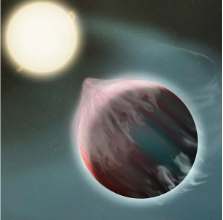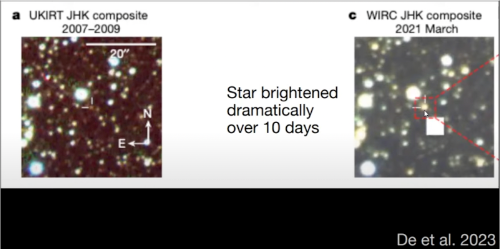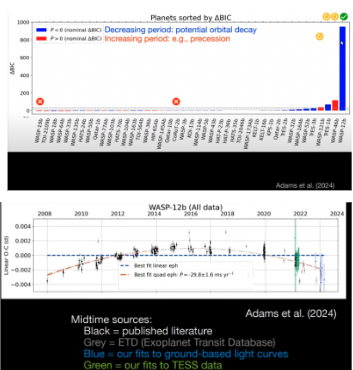First Friday – Finding the Next Doomed Worlds by Dr. Elisabeth Adams. Dr. Elisabeth Adams is part of the Planetary Science Institute as a senior research scientist. Dr. Elisabeth Adams discussed her research focused on finding doomed worlds.
Is Earth Doomed?
When first hearing about the concept of a doomed world, many people’s initial concern would probably be about whether or not Earth is doomed. As of right now, it’s not, but the reason isn’t that comforting. At the beginning of her talk, Dr. Adams discussed the 5 different periods of mass extinctions on Earth. With the most severe one, Permian, having the highest death rate of 95%. She also discussed how Venus and Mars have changed over time. They once had water, but now they are dry, hot, and uninhabitable. The changes occurred largely due to the Greenhouse Effect. It seems like Earth could be on that path, as concerns over climate are rising. However, even if Earth’s fate is the same as Venus and Mars which results in all life being wiped out, Earth is still not doomed.
What Is a “Doomed World”?

(Artist’s depiction of a hot jupiter starting to be destroyed by its star; taken from https://www.astronomy.com/science/deadly-tides-mean-early-exit-for-hot-jupiters/)
A doomed world from the perspective of Dr. Elisabeth Adams and her research, is not a planet which becomes uninhabitable. But is one that is on the path to be destroyed completely. Even if Earth was to become unable to support life, as long as the planet is still there and isn’t going to be destroyed. It is possible that Earth could be doomed when the Sun starts to die and becomes a red giant, but that is billions of years away. Her research focuses on planets that are experiencing tidal decay and are falling into their star. Basically, the orbital periods of the planet are decreasing over time and the planet ends up crashing into the star. She focuses on planets around the size of Jupiter that are close to their star, known as “hot Jupiters”. There are significant tidal forces which cause the orbital period of the planet to decrease over time.
Finding Doomed Worlds
The process of a planet falling into its star has actually been observed. Dr. Elisabeth Adams showed the pictures scientists were able to capture. It’s not her research, but it does show how scientists are able to determine that a planet is falling into a star.

When observing the star, scientists noticed it became significantly brighter for a period of 10 days. 10 days is a significantly short time in the field of astronomy. It slowly faded over a period of 6 months. According to Adams, this is the signature of a planet falling into a star. When it does so, the star absorbs the impact which causes it to become very bright.
In Dr. Elisabeth Adams’s research, her team pays attention to orbital decay and looks for evidence of a decreasing orbital period. The planet that is the most “doomed” with the most evidence of orbital decay is WASP-12b. According to Adams’s research, WASP-12b is experiencing a more significant level of decreasing period than the other planets she observed.
Here’s her data and her graph showing orbital decay:

There are not many planets which are as obviously doomed as WASP-12b. Some planets observed which were experiencing changes in their orbits either had increasing orbits (possibly due to other planets or their star) or more data is needed to determine what’s happening. For example, according to Adams’s data, TrES-1b is experiencing a decreasing period. But it’s too fast for it to be considered orbital decay. It’s possible it’s being affected by something else and more data is needed. At this point, Dr. Elisabeth Adams will continue to gather data about planets and look for more doomed worlds.
To watch the recording of Dr. Elisabeth Adams’s First Friday presentation visit: First Friday Astronomy – February 2024 – Dr. Elisabeth Adams – Doomed Worlds
Article written by Arianna Japalucci, 2024 AstroTAC team member.